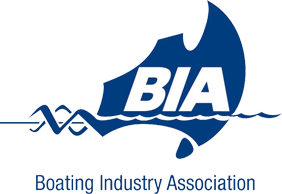Mast Fittings – Essential Features
27 April 2023Sailing yacht Mast Fittings and their essential features. Masts are vertical poles or spars that can support the sails and provide stability to the sailing boat through their ropes and cables. They can support the sails as their components can counterbalance the force of the wind. Stability is likewise ensured thanks to their weight. Masts can also be utilised as a signalling device since they can be integrated with flags or signal lights.
Now, if you want to add a new mast to your sailing boat, you must ensure that it will be equipped with the correct fittings. Here are some fittings that can be installed on your new mast.
Mast Step
To ensure your mast stays up you must fit a mast step to mast and deck/hull so it can secure the bottom of the mast to your boat. Without a mast step, the mast base (bottom of the mast) can slide in any direction inside the boat or on the deck, which would result in the mast falling down. It is typically made of aluminium or stainless steel and is bolted to the deck. You must add this fitting as it can help transfer the weight of the mast and rigging down to the boat’s hull.
Spreader
Spreaders are horizontal bars that extend out from the mast and support the shrouds/mast. Spreader brackets are the fittings that secure the spreaders to the mast. Spreaders are positioned to support the middle section of the mast, as stays (wires) extend from the top of the mast down to the outer end of the spreader and then down to the deck on both sides. This prevents the middle of the mast from bending sideways, as both spreaders should provide equal pressure on the mast. You must position these fittings correctly so that the shrouds will be properly aligned with the mast.
Shroud Fittings
Shroud fittings are fittings that secure the shrouds to the hull, mast and spreaders. They are bolted to the hull or deck of the boat in the form of chainplates. The shrouds are connected with clevis pins and are adjusted with turnbuckles, this commonly features a right-hand thread at the top and left-hand on the bottom with a body that turns on the threads. When adding these fittings, you must opt for those made from durable materials so they can support the weight of the mast and rigging.
Forestay Fitting
The forestay is the wire that runs from the top of the mast to the bow of the boat. It supports the mast from the front and prevents it from tipping over backwards. To secure the forestay to the mast, you must pair it with a forestay fitting through a clevis pin or turnbuckle.
Boom Fitting
The boom is the horizontal spar that extends out from the mast and supports the mainsail. With a boom fitting, the boom can be secured to the mast without any issues. The boom is attached to this fitting, which is often made from metals, with a clevis pin or similar.
Masthead Fitting
The masthead fitting is the fitting that sits at the top of the mast. The masthead fitting integrates attachment points for halyards or lines that hoist sails and other fittings that are needed for the proper functioning of the mast.
Mast Collar
The mast collar is a fitting installed around where the mast passes through the deck on a keel stepped mast and provides additional support. The mast collar helps strengthen the deck and holding the mast in position. The mast collar can also be designed to prevent water from entering the yacht where the mast enters through the deck.
While other fittings may be added to rigging setups, these fittings are essential for the core functions of your mast. You must ensure that these fittings are installed correctly and are of high quality so your mast can perform as intended.
If you’re having any issues with your current mast or if you need a new mast, contact Riggtech. We have all the facilities and capabilities to make new masts and modify old ones in house at our state-of-the-art factory facility.
Optimized by: Netwizard SEO


